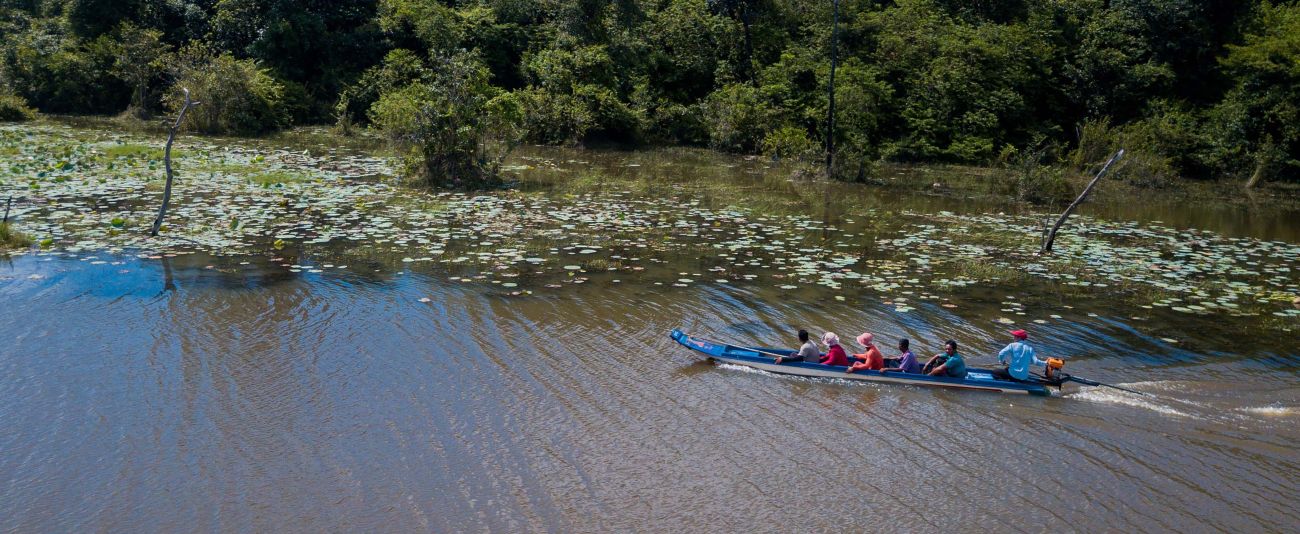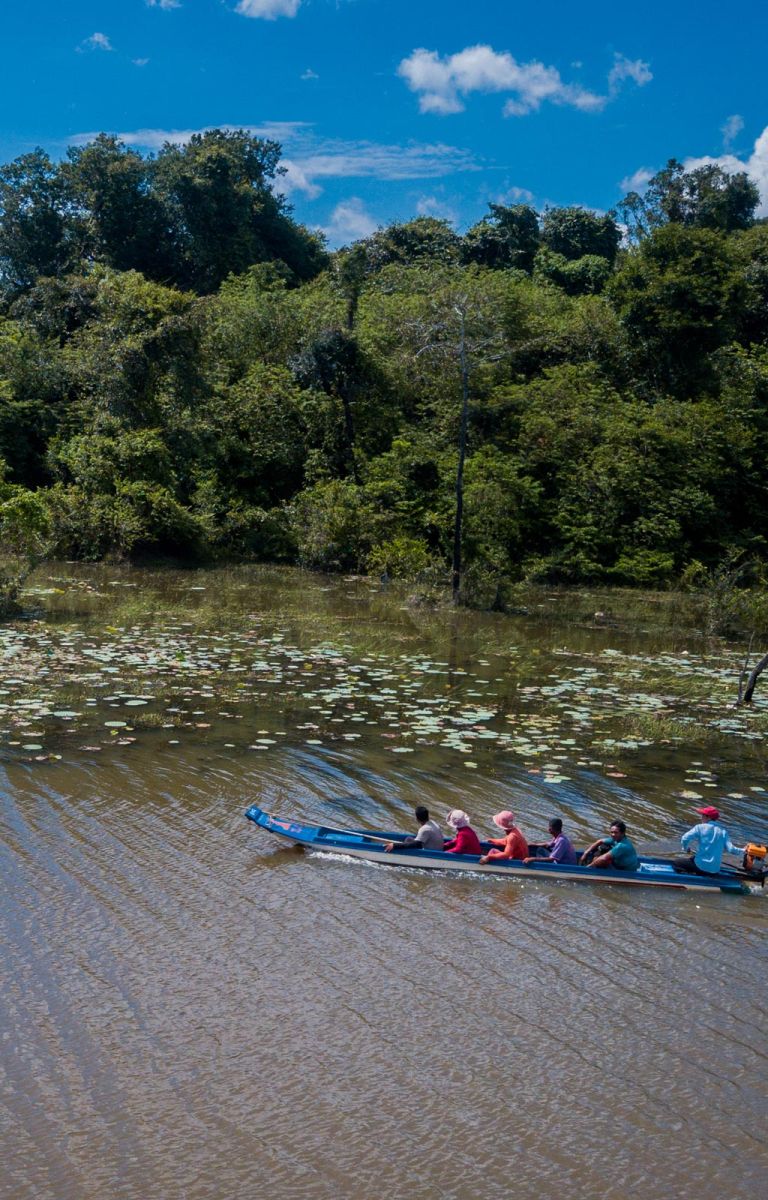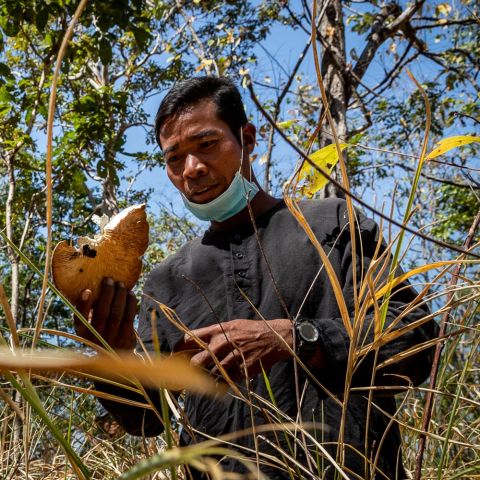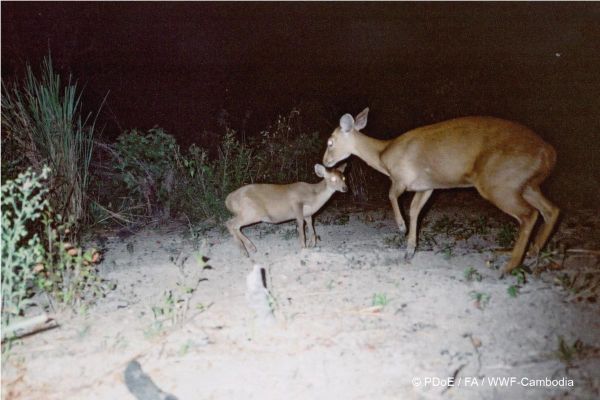

Death threats and physical clashes with illegal fishers did not deter Ancheus Sam An from protecting the resources on which her community depends. With support from PaFF, she and fellow residents of Punchea Village in Kratie Province registered a community fishery in a part of the Mekong River.
Since 2016, she has undertaken regular patrols with a team that travels by boat to prevent illegal fishing. Some of the culprits they catch are given a warning letter and told not to illegally fish in the area again. Others are taken to court.
“We, Indigenous Peoples in this community, mainly depend on fish,” says Sam An. “If we don’t protect our fish, what else can we hope for? We all know that our fish resource is vanishing, so we have to protect it for our children and grandchildren so that they will still have enough fish to eat.”
Across the four provinces in which PaFF operated, the communities that the partnership supported have since prevented and reported hundreds of crimes. By protecting the resources on which their livelihoods depend, they are also conserving biodiversity and contributing to action on climate change.
It is their formal rights to use and benefit from local resources that empower communities to protect what they have. But rights alone are not enough. Communities need technical and financial support and the ability to elicit responses from the authorities. PaFF assisted in each of these areas.
Building up capacities and raising awareness
Community-based monitoring of local natural resources, such as community forests, began in Cambodia only in the mid-2000s, following the enactment of laws and other legal instruments governing the country’s forests and fisheries. Since then, and with considerable input from PaFF, it has become a more widespread and effective approach.
To strengthen capacities among management committees and members of community forests and fisheries, PaFF provided training on rights, responsibilities and procedures for patrolling and law enforcement. This included training on developing patrolling plans, dealing with perpetrators during patrols and documenting and reporting cases to the authorities.
PaFF also installed signboards in 105 community forests and 24 community fisheries to raise awareness among local people and outsiders of the boundaries and rules. The partnership trained a group of management committee members from seven community forests and 11 community fisheries to use GPS devices and the Spatial Monitoring and Reporting Tool (SMART) for collecting data in real time on mobile devices, such as smartphones, during patrols. The data can be uploaded to a database for analysis and reporting.
“Patrolling and reporting of illegalities could be improved with more widespread use of technologies, such as Telegram groups, SMART tools and drones,” says Un Vannak, Deputy Executive Director of the Culture and Environment Preservation Association, one of the four implementing partners of PaFF. There is also scope for the government to increase communities’ rights and protections in relation to enforcing the law in their areas. Equipping patrol teams and increasing the number of patrols undertaken jointly with relevant authorities would increase their legitimacy and help deter illegal acts.”
Patrolling pays off
As well as smartphones and GPS devices, patrolling teams need flashlights, batteries and walkie-talkies. They need raincoats, hammocks, food and fuel for motorbikes and boats. The cost of these things generally has been covered by development projects or by the community members. To address this, PaFF set up credit schemes and mini trust funds to generate income to fund the patrols and other aspects of natural resource management (see chapter 4 for details of these mechanisms).
For example, the Prey Kbal Bey Community Forest in Kampong Thom Province uses some of the income from its community forest credit scheme to fund twice-monthly patrols. Between 2019 and 2020, these patrols halted illegal activities five times and confiscated one boat and 500 poles of stolen wood.

“We will keep working to protect the forest, based on the management plan, for instance, by patrolling, restoring degraded areas and so on. With these efforts, we hope to generate more income from community forestry.” — Ton Mean, Samaky Trapang Totim Community Forest Chief, Preah Vihear
During 2022, members of 146 PaFF-supported communities patrolled their areas on average four times a month under the direction of the committees managing those areas and with support from local authorities and government agencies. They reported 311 cases of illegal activities, such as illegal logging, fishing, hunting and land encroachment. By the end of the year, the relevant authorities had responded to 151 of the reported cases, for example, by confiscating illegal fishing gear and chainsaws, reclaiming encroached land for communities and issuing fines.
The number of cases reported and addressed demonstrates the combined effects of more frequent patrols by larger patrol teams supported by income from sustainable financing mechanisms, improved documentation and reporting by patrol groups and more effective advocacy and demands for interventions to relevant duty bearers (see chapter 3).
“The quality of our forest has improved,” says Ton Mean, chief of the Samaky Trapang Totim Community Forest in Preah Vihear Province. “Although, we cannot say it is 100 percent protected because illegal logging still happens. We will keep working to protect the forest, based on the management plan, for instance, by patrolling, restoring degraded areas and so on. With these efforts, we hope to generate more income from community forestry.”

